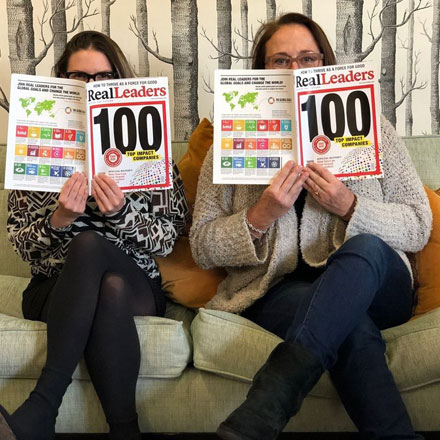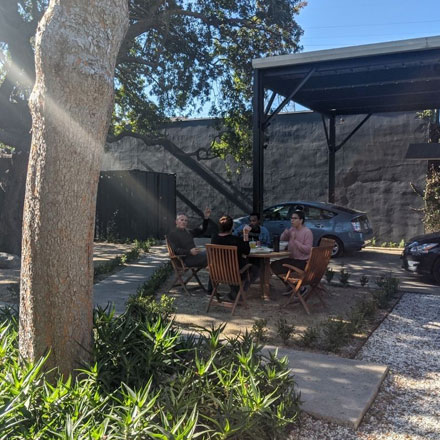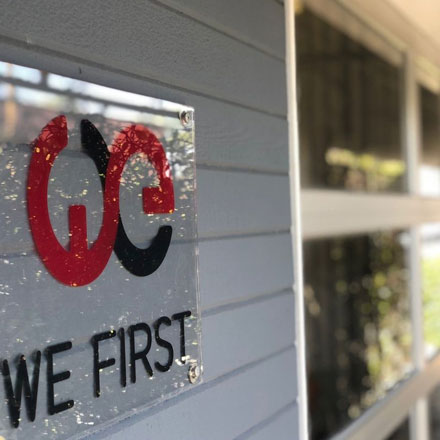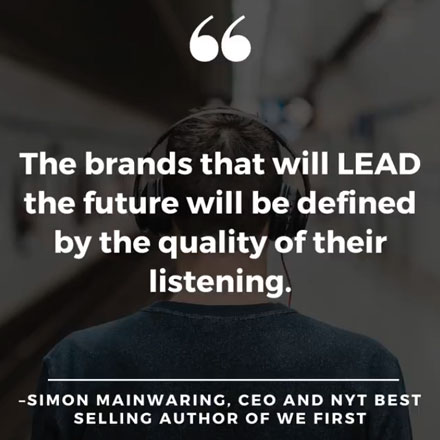
Purpose At Work
Best Buy: Fostering A Future Where Tech Coexists With Humanity & Nature
As Vice President of Social Impact at Best Buy, Inc. since 2020, Andrea Wood still looks back to the company’s former CEO and executive chairperson, Hubert Joly, for inspiration. “I remember a time around 2012 – I had only been at Best Buy for about a year – when the company was really struggling,” Wood recalls. “Hubert came on board to lead us through that challenge. At one of the very first employee meetings he had, he introduced five areas of focus for the turnaround. I was so happy to see that what we were doing with community and social impact was … making the world a better place.”
Joly’s five-year turnaround plan was not, says Wood, “about numbers in the business … That was really exciting for me. [And since then] we’ve never, even in the toughest of times, wavered from that commitment of positively impacting the world in many different ways.”
Wood leads measurement and evaluation of all Best Buy’s Social Impact programs, including tracking of short and long-term outcomes for communities and employees.
A History of the Future
Best Buy was founded in 1966 by Richard M. Schulze as Sound of Music, a hi-fi stereo retail store in St. Paul, Minnesota. It survived its struggling times in the 2010’s, and, now headquartered in Richfield, Minnesota, has steadily grown to become a global electronics retail giant with $46+ billion annual revenue. “Let’s talk about what’s possible” is one of the company’s most memorable mottos. Its leadership agrees it is possible to embrace sustainability and social impact as core values while still making a lot of money, says Wood.
Because, says Wood, Best Buy believes in tech’s potential to empower individuals and communities. The company thinks of this mission as “Beyond profit: Enriching lives, contributing positively.”
Which is what Wood has done for a living, leading corporate communications, CSR, philanthropy, employee engagement, Public-Private Partnerships, and not-for-profit management at organizations as diverse as Target and Travelers. She’s held various leadership positions and leads the Social Impact team at Best Buy.
Best Buy’s ambitious and expanding interest in modeling responsible corporate citizenship requires ongoing development, implementation, and maintenance of multiple strategic CSR programs, says Wood.
Origin of a Company’s Social Impact
But, Wood’s idea of “sustainability” focuses on the human component, especially when it concerns youth and education, especially bridging the digital divide that still challenges the US and its future.
As Executive Director of the Best Buy Foundation a 501(c)(3) founded by Best Buy in 1994 to support opportunities to build brighter futures for teens from disinvested communities, Wood believes that “Demography shouldn’t define destiny.”
Best Buy’s 53 Teen Tech Centers provide unparalleled access and cutting-edge technical education, mentorship, and college guidance support to underprivileged youth. The company plans to double that number in the next few years, which ought be achievable given its 1,100+ stores spread across the US and Canada.
“We’re always looking for the right partners in new communities; youth-serving organizations that are serving under-resourced neighborhoods,” says Wood.
But, she says, “We always want to make sure when we’re going into a community that we are finding the absolute best partner possible. The ones who are already engaging with local youth, and already are seeing impact and measuring that impact.”
The Tech Center initiative just celebrated its 10-year anniversary, and Wood likes to jokingly paraphrase Hamilton: “‘I was in the room where it happened!’ Ten years ago, I was in a room with a small group of folks from [our] Community Relations [team] at the time. We were thinking, what is it that we could do that would actually create more of a lasting impact with youth, provide the highest dosage of impact, and leverage our unique expertise as a electronics technology company?”
Says Wood, “Our very first co-invested Teen Tech center happened in San Diego with Sony Electronics. That was a conversation we had as business-to-business partners, saying, hey, we’re kind of trying to do the same things in the community; we should do this together.
“What I love about the Teen Tech Centers is that we are engaged from the moment we start talking to a community about bringing one to their area, in perpetuity.”
“As long as they’re working with us, as long as they’re running the teen tech center, we are engaged with them and supporting them. I really love that model because … it’s not just funding. Instead, it’s all the other resources we can bring to support that organization as a big company,” says Wood.
Best Buy’s “Geek Squad Academy” similarly empowers young minds with tech skills, says Wood, as does the company’s multiple “flexible scholarships … and open grant applications in the areas of teens and tech and career pathway programming, as well as arts and culture because we’re trying to support our hometown community, right?”
Best Buy’s community grant foundation program has given more than $25M since its inception in 2007. Today, Wood oversees annual multi-million-dollar giving budgets. A lot of that is focused on youth programs.
Why all this Focus on Young People?
“These youth,” says Wood, “are a really amazing talent pipeline for Best Buy, but also for our partner companies and partners overall. We’re creating more intentional internship programs into Best Buy and our partner companies. We’re creating very structured career pathway programs to get youth ready for experiences in the workplace or college or career.”
Best Buy aims for “every young person to have the technology, training, and mentorship needed to achieve their potential and pursue their dreams,” says Wood.
“We always try to meet them where they are. We have all these super-passionate youth. They’re passionate about technology, they’re passionate about Best Buy, because we’re very involved with them. Really, it is our future workforce in so many ways.”
Last Word on Wood: “We”
Wood doesn’t take personal credit for any of Best Buy’s successes. Social impact, she says, requires a “collective force” as key to business solving for our coalescing crises. That’s one major mission of the “collective impact coalition” that Wood leads. The coalition of Best Buy vendor partners such as Google and Facebook, and community partners such as LA County act as impact force multipliers.
That requires a different kind of commitment and cooperation than is the norm. “A lot of companies will come in [to a community] and they’ll fund a program—then they’ll walk away … Well, I think you only see holistic change when you go deep and you stay long, right?”
“What I’m really proud about with the Teen Tech Center is that we started 10 years ago, we’re still doing it, and we’ve stayed with our partners the whole time. We provide them annual funding, annual support, and then all of this other support we bring to bear. I think that is the only way you actually see deep impact. You have to stick with it.”
If you’d like to dive deeper with more purpose-led companies like Best Buy, check out the Lead with We podcast here, so that you too can build a company that transforms consumer behavior and our future.





